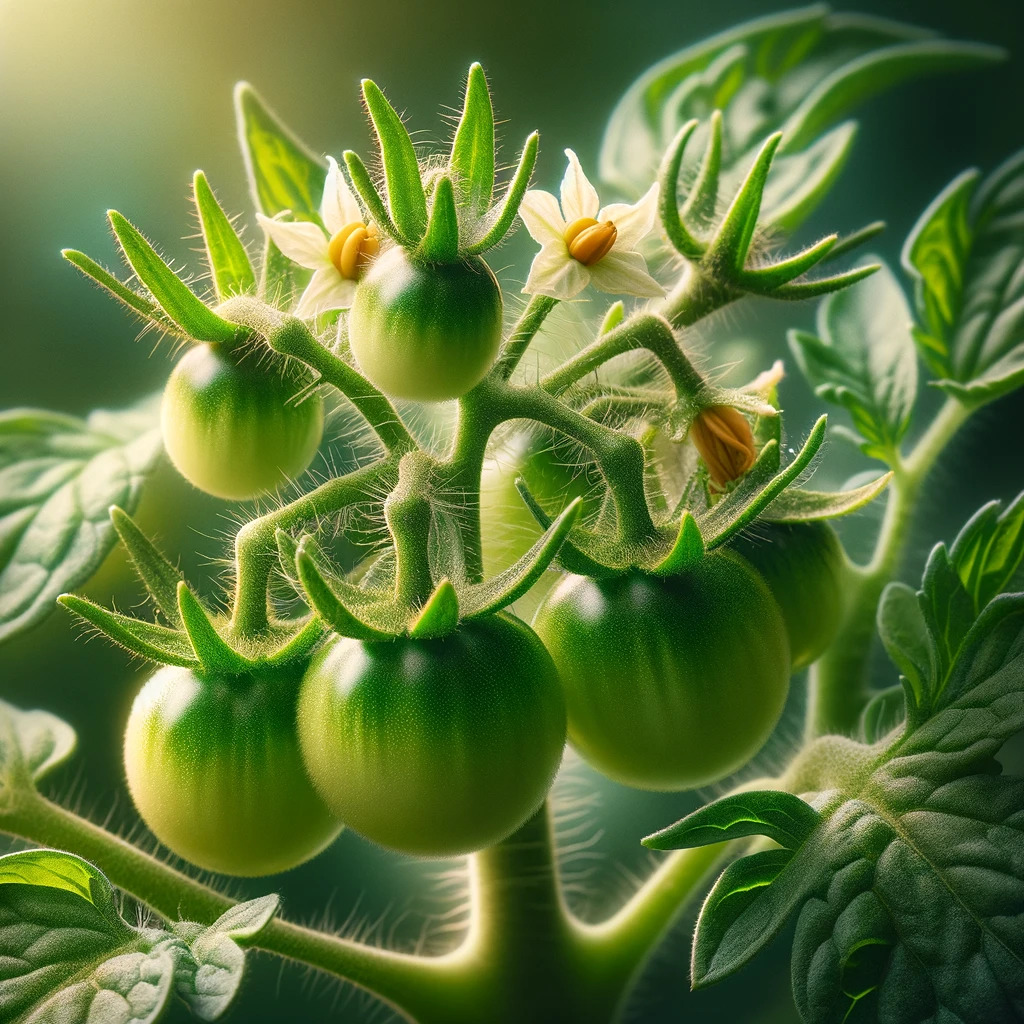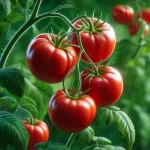Cultivating tomatoes is essential in Latin American agriculture, standing out for its versatility and demand in the market. Understanding the phenological stages of tomatoes is key to achieving successful and high-quality production. This article details each stage of the tomato’s life cycle, offering technical advice for producers.

| Days after Planting (DAP) | Activities and Events |
|---|---|
| 0-10 DAP | Seed Germination |
| Keep soil moist and warm (approximately 70-80°F) | |
| 10-20 DAP | Seedling Development |
| Transplant outdoors after last frost | |
| 20-30 DAP | Plant Establishment |
| Roots establish in soil and begin to grow | |
| 30-45 DAP | Plant Flowering |
| 45-60 DAP | Beginning of Fruit Formation |
| 60-75 DAP | Fruit Growth |
| 75-90 DAP | Fruit Ripening |
| 90-100 DAP | Full Fruit Maturity |
| Weeks after Transplanting | Activities and Care |
|---|---|
| 4-6 weeks | Application of balanced fertilizer as per label recommendations |
| 6-8 weeks | Application of mulch around plants |
| 8-10 weeks | Regular inspection for diseases and pests |
| Supporting plants using stakes or cages |
| After Harvest | Activities and Care |
|---|---|
| 60-80 DAP after transplant | Start of Harvest |
| Regularly harvest ripe tomatoes | |
| After harvest | Store tomatoes in a cool, dark place |
| Preferably at room temperature |
This table provides an organized and clear overview of key activities and events during the tomato growth cycle, from planting to harvest. Be sure to adjust the dates according to your location and specific garden conditions.
Phenological Stages of Tomatoes
Stage 1: Germination
- Start of Development: Tomato germination begins with the sowing of seeds in suitable substrate, under controlled conditions of humidity and temperature.
- Initial Care: Seedlings require careful management to prevent diseases and transplant stress. It is essential to provide adequate light and maintain a constant temperature.

Stage 2: Vegetative Growth
- Leaf and Stem Development: During this phase, tomato plants rapidly develop their leaves and stems. Proper nutrition, especially in nitrogen, is crucial for healthy growth.
- Plant Formation: Pruning and staking are important practices to shape the plant and ensure good aeration and light exposure, which are vital for plant health.

Stage 3: Flowering
- Onset of Flowering: The appearance of flowers marks the beginning of the reproductive phase. It is important to maintain optimal temperature and humidity conditions to facilitate pollination.
- Management During Flowering: Pollination is crucial at this stage. In some cases, manual or natural pollinators may be necessary to ensure good fruit set.

Stage 4: Fruiting
- Fruit Development: After pollination, the fruits begin to develop. It is essential to maintain a balance in irrigation and nutrition to ensure uniform fruit development.
- Ripening: Fruit ripening is a critical stage. Controlling environmental conditions and nutrition can improve the quality and flavor of tomatoes.

Stage 5: Harvest and Post-Harvest
- Harvest: Tomato harvesting should be done at the optimal ripeness point to ensure the best quality. Harvesting can be manual or mechanized, depending on the scale of production.
- Post-Harvest Handling: After harvest, tomatoes must be handled carefully to avoid damage. Proper storage and transportation are essential to maintain product quality.

Conclusion
Understanding and properly managing the phenological stages of tomatoes is essential for achieving successful production. Applying appropriate agronomic techniques at each stage can result in a significant improvement in the quality and quantity of the harvest.
 AgronoBlog – Agriculture Blog
AgronoBlog – Agriculture Blog 

